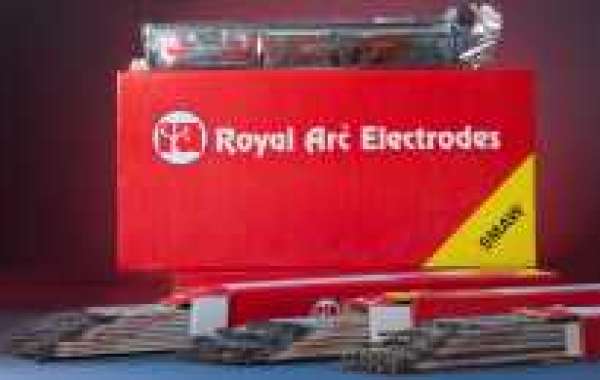Royal Arc was established in1986. We are leading manufacturers of Manual Metal Arc Welding Electrodes, Steel Welding Wires, Stainless Steel Welding Wires, Copper Coated Solid Wire for Co2 Gas Welding, Resin Bonded Abrasive Wheels, Stainless Steel Filler Wire, and Flux-Cored Wires (Stainless Steel Flux Cored Wires, Mild Steel Flux Cored Wires, Hard facing Flux Cored Wires).
Royal Arc Electrodes has been a trusted name in the welding industry for over two decades. We are specialized in FCW wires and Welding Electrodes. We are India's first and only successful manufacturer of Stainless Steel Flux Cored Wire. Furthermore, we have also worked in various industries and fields and have an unblemished track record of product and service quality. We continue to strive for a more ambitious future by increasing our product line regularly.
We have achieved the highest performance requirements of our clients in terms of welding requirement and reliability at all welding settings thanks to continual progress in the development of manufacturing processes. Our Flux-Cored Wire is manufactured in a dedicated production process that starts with the quality raw material and ends with the completed product.
Stringent to ensure that the Welding Wires are perfectly manufactured in accordance with International Standards and abide by quality control techniques. With ISO 9001 Quality Management System implementation, all our products come with World Class Competence. We are involved in continuous research and development to bring new welding products and provide better service to our customers. Copper coating is applied to wires consistently and meticulously. The Coating thickness is kept at an optimal level to ensure that vapours contain the least copper. This is to safeguard the health and safety of the welders as well as the environment. Copper-free welding wires are now being developed.
Royal Arc evolves as a leading manufacturer in welding and enhances our competitive advantages to become a top global player.
Welding electrode manufacturers offer electrodes in various sizes, shapes, and materials. The type of electrode you choose will depend on the application you are using it for. Different industries have different requirements for welding electrodes. For example, the automotive industry often uses covered welding electrodes because they produce fewer fumes and are easier to use. The aerospace industry often uses flux-cored welding electrodes because they produce fewer fumes and provide a removable slag after the weld is complete.
No matter what industry you are in, there is a welding electrode that is right for you. With so many options available, it is essential to do your research to find the best welding electrode for your specific application.
Most common types of electrodes
The most common type of welding electrode is the Stick electrode. Stick electrodes come with a metal core covered with a flux coating. The flux coating helps to protect the weld from contaminants and provides an arc-stable connection between the electrode and the workpiece. Stick electrodes are available in various diameters, lengths, and core materials. The most common diameters are 0.045 inches (0.114 cm) and 0.0625 inches (0.158 cm). The most common lengths are 18 inches (45 cm), 24 inches (61 cm), and 36 inches (91 cm).
The next type of welding electrode is the Wire electrode. Wire electrodes come with a metal core covered with a flux coating. The diameters are 0.035 inches (0.089 cm) and 0.045 inches (0.114 cm). The length is 36 inches (91 cm).
Wire electrodes help in all welding processes, including gas metal arc welding (GMAW), flux-cored arc welding (FCAW), and gas tungsten arc welding (GTAW).
The last type of electrode we will discuss is the Flux-cored electrode. Flux-cored electrodes come with a metal core covered with a flux-filled tubular casing. The flux helps to protect the weld from contaminants and provides an arc-stable connection between the electrode and the workpiece. Flux-cored electrodes are available in various diameters, lengths, and core materials. The most common diameters are 0.035 inches (0.089 cm) and 0.045 inches (0.114 cm). The most common length is 36 inches (91 cm).
All welding processes use flux-cored wires, including gas metal arc welding (GMAW), flux-cored arc welding (FCAW), and gas tungsten arc welding (GTAW).
Selecting the right electrodes for your needs
The first thing you need to do is determine the type of weld you will be performing. Are you going to be doing a fillet weld or a butt weld? Fillet welds helps in joining the two pieces of metal at an angle, while butt welds join two pieces of metal that are flush.
Next, you need to determine the thickness of the metal you will be welding. The thicker the metal, the larger the diameter of the electrode you will need. Finally, you need to select an electrode compatible with the welding machine type you are using.
Stick electrodes benefit fillet welds on thin metals, while wire electrodes help fillet and butt welds on thin or thick metals. Similarly, flux-cored electrodes support butt welds on thick metals.
Are you looking for reliable welding electrode manufacturers?
Get in touch with us!








